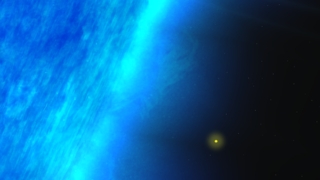The Dual Personality of the 'Christmas Burst'
Common to both scenarios is the presence of a neutron star, the crushed core that forms when a star many times the sun's mass explodes.
According to one science team, the burst occurred in an exotic binary system where a neutron star orbited a normal star that had just entered its red giant phase. The outer atmosphere of the giant expanded so much that it engulfed the neutron star, which resulted in both the ejection of the giant's atmosphere and rapid tightening of the neutron star's orbit.
Once the two stars became wrapped in a common envelope of gas, the neutron star may have merged with the giant's core after just five orbits, or about 18 months. The end result of the merger was the birth of a black hole and the production of oppositely directed jets of particles moving at nearly the speed of light, which made the gamma rays, followed by a weak supernova. Based on this interpretation, the event took place about 5.5 billion light-years away, and the team has detected what may be a faint galaxy at the right location.
Another team supports an alternative model that involves the tidal disruption of a large comet-like object and the ensuing crash of debris onto a neutron star located only about 10,000 light-years away.
Gamma-ray emission occurred when debris fell onto the neutron star. Clumps of cometary material likely made a few orbits, with different clumps following different paths before settling into a disk around the neutron star. X-ray variations detected by Swift's X-Ray Telescope that lasted several hours may have resulted from late-arriving clumps that struck the neutron star as the disk formed.
The NASA release is here.
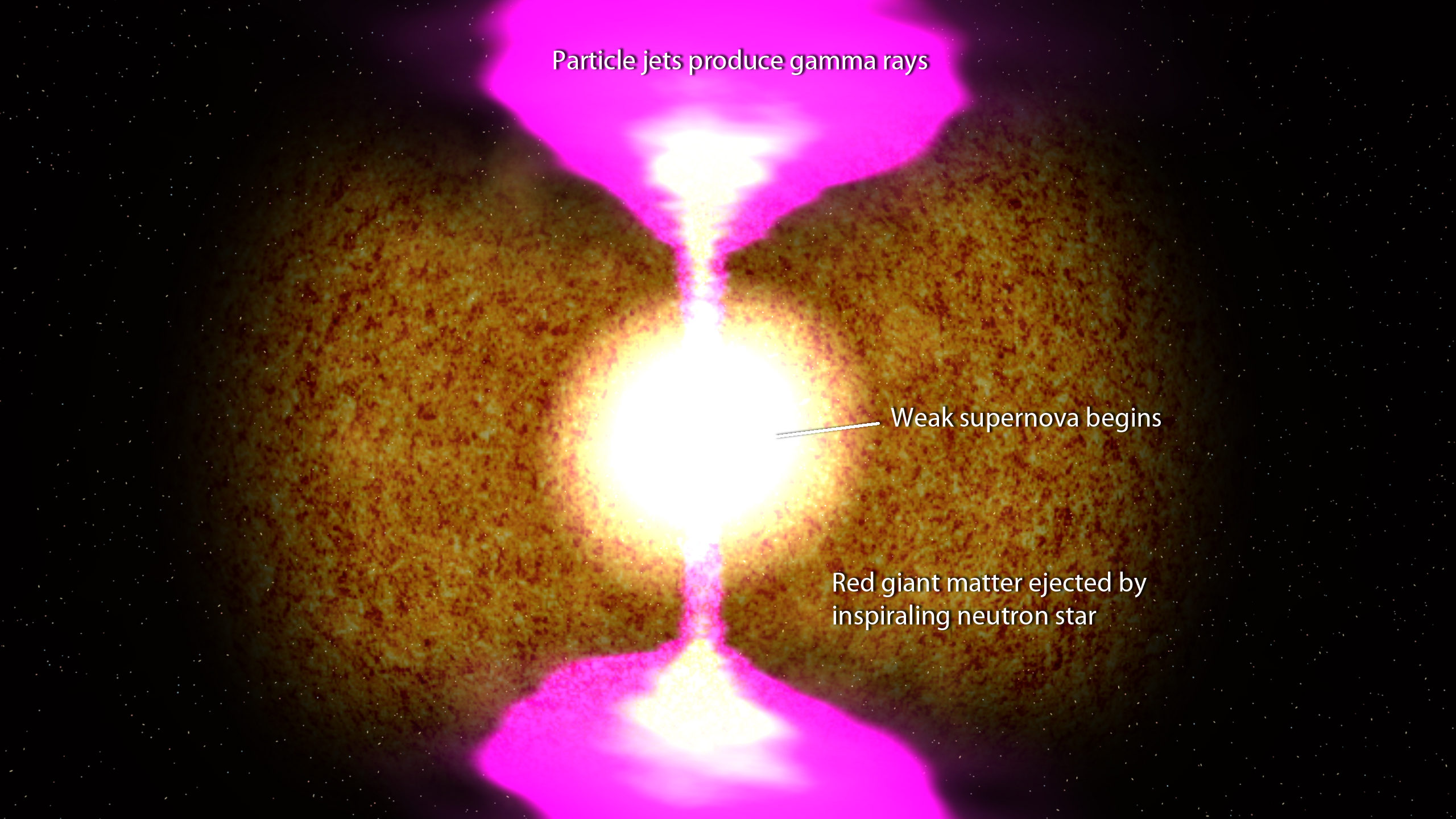
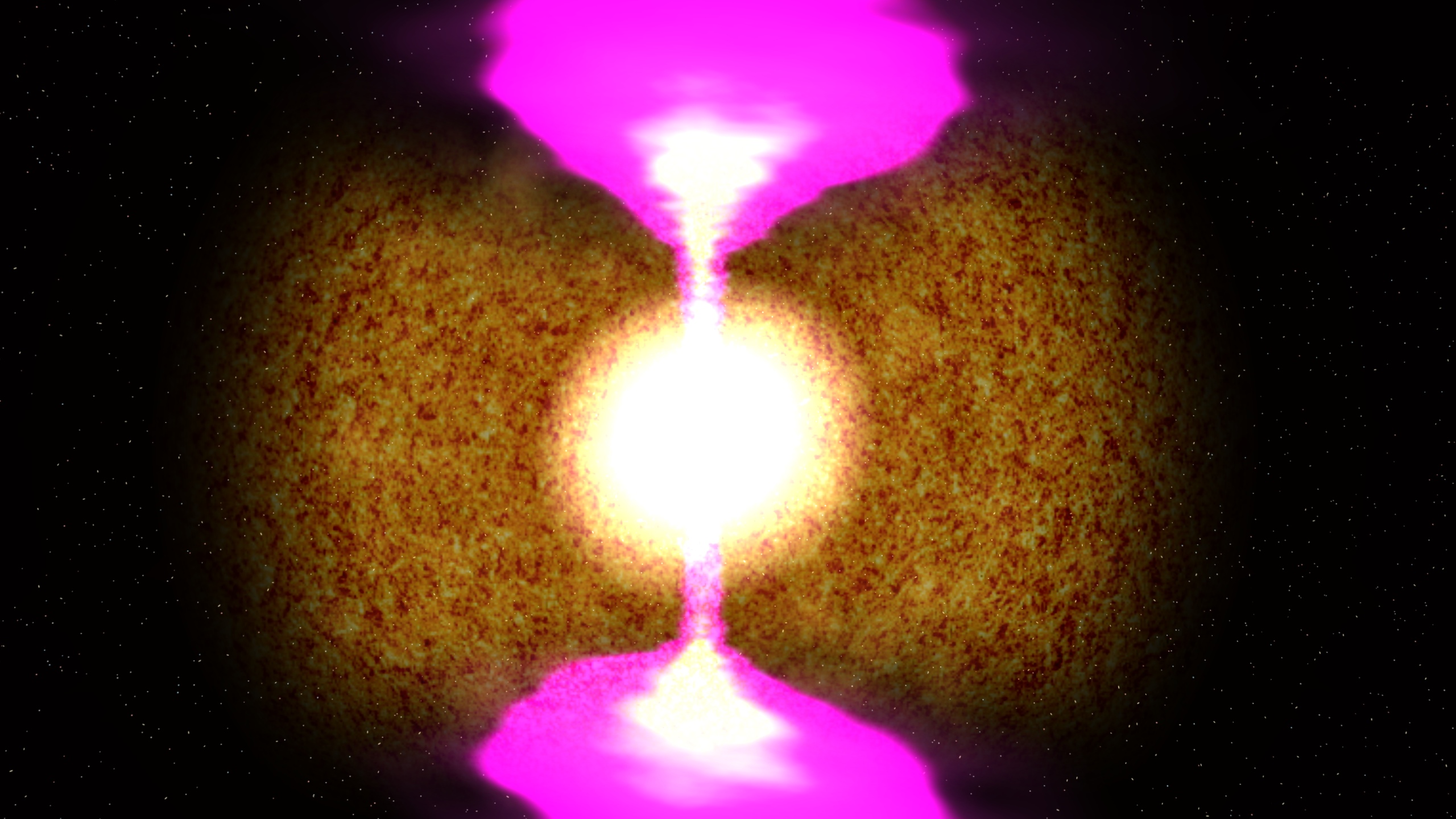

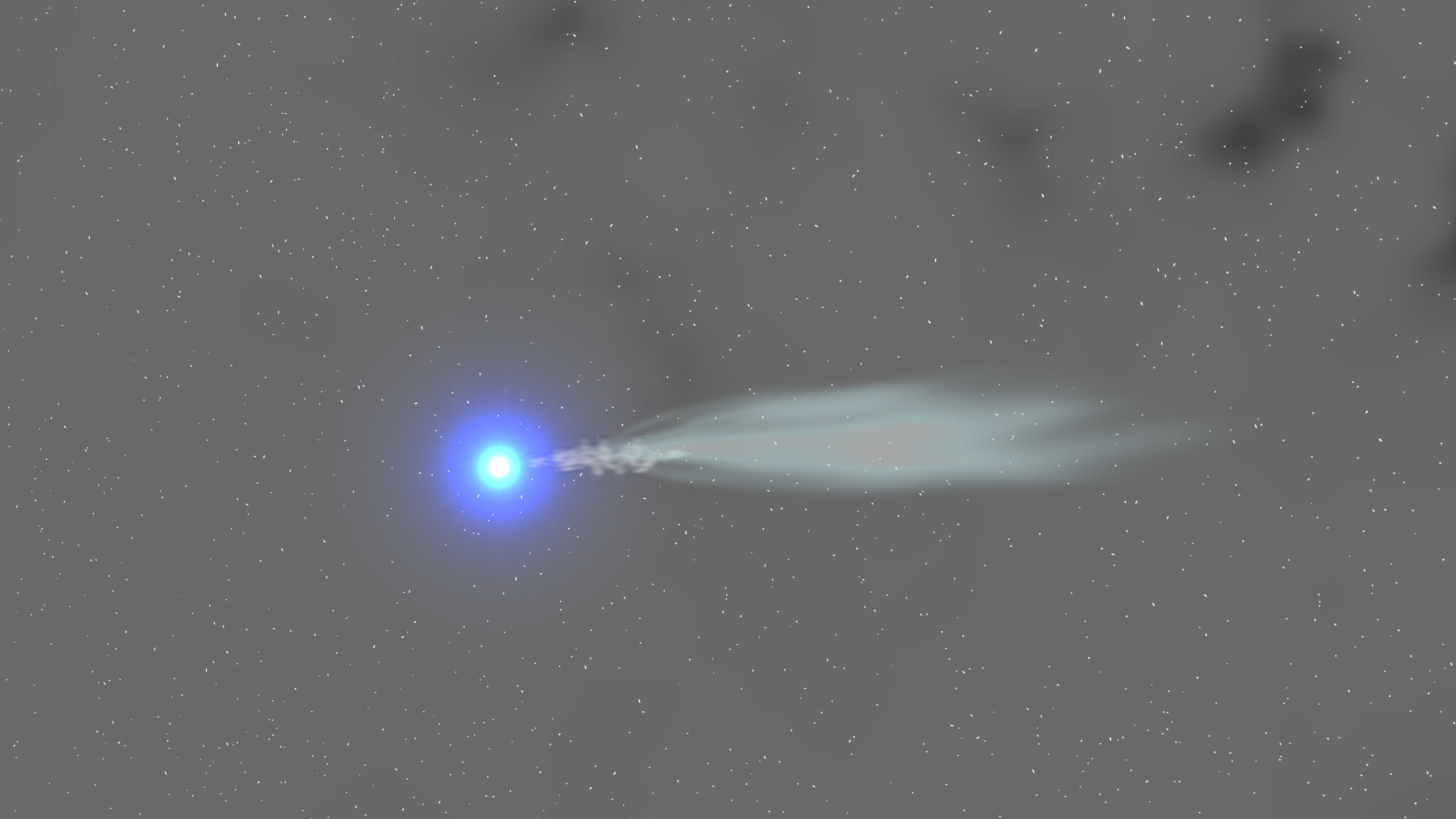

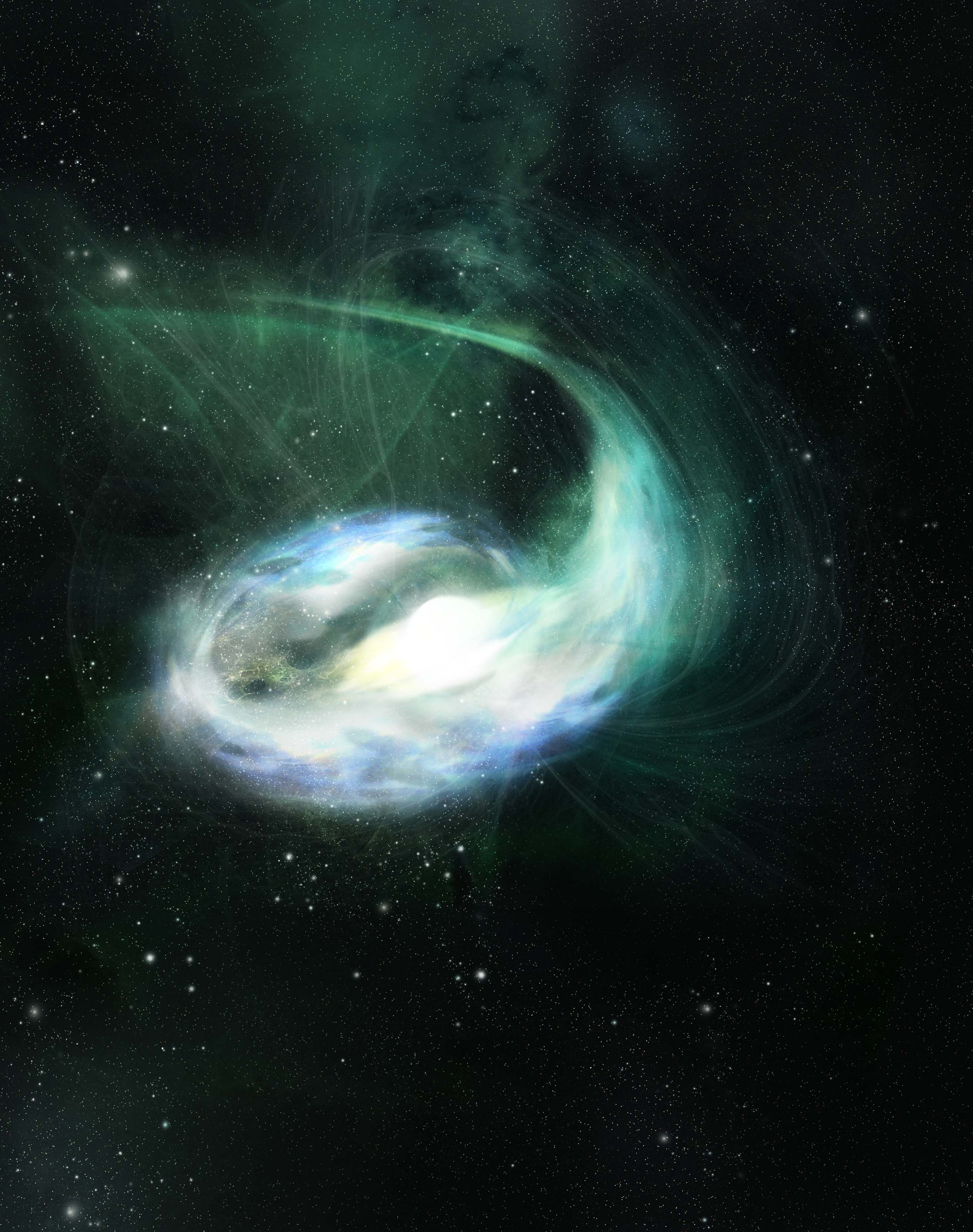
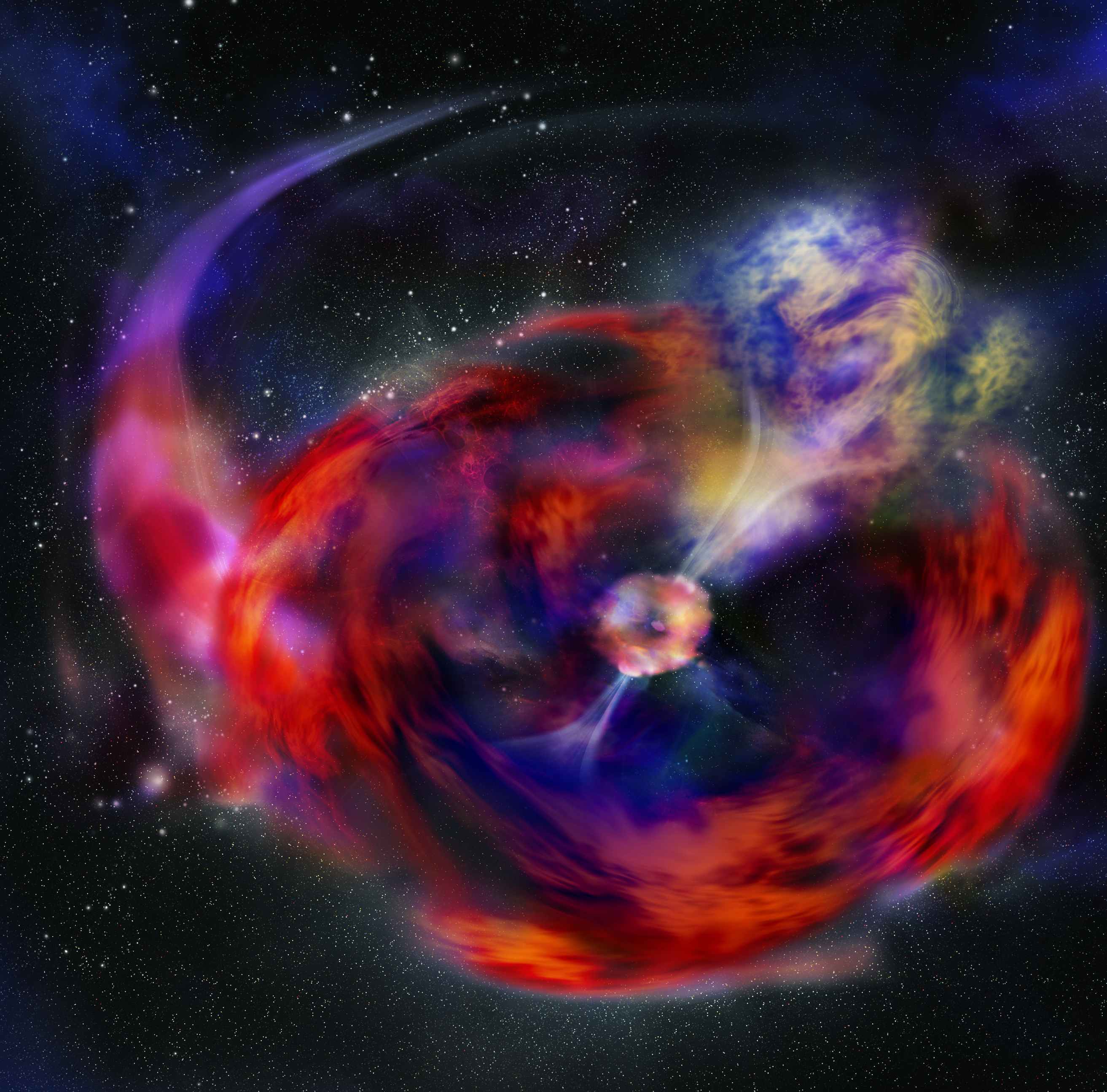
Related
For More Information
Credits
Chris Smith (HTSI): Animator
Scott Wiessinger (USRA): Video Editor
Scott Wiessinger (USRA): Producer
Francis Reddy (Syneren Technologies): Writer
NASA/Goddard Space Flight Center
https://svs.gsfc.nasa.gov/10808
Mission:
Swift
Data Used: Note: While we identify the data sets used in these visualizations, we do not store any further details nor the data sets themselves on our site.
This item is part of this series:
Narrated Movies
Goddard TV Tape:
G2011-127 -- Christmas Burst
Keywords:
SVS >> Comet
SVS >> HDTV
SVS >> Neutron Star
SVS >> Satellite
SVS >> X-ray
GCMD >> Earth Science >> Spectral/Engineering >> Gamma Ray
SVS >> Black Hole
SVS >> Astrophysics
SVS >> Space
SVS >> Red Giant
SVS >> Swift
SVS >> Star
SVS >> Space Science
NASA Science >> Universe
GCMD keywords can be found on the Internet with the following citation: Olsen, L.M., G. Major, K. Shein, J. Scialdone, S. Ritz, T. Stevens, M. Morahan, A. Aleman, R. Vogel, S. Leicester, H. Weir, M. Meaux, S. Grebas, C.Solomon, M. Holland, T. Northcutt, R. A. Restrepo, R. Bilodeau, 2013. NASA/Global Change Master Directory (GCMD) Earth Science Keywords. Version 8.0.0.0.0
